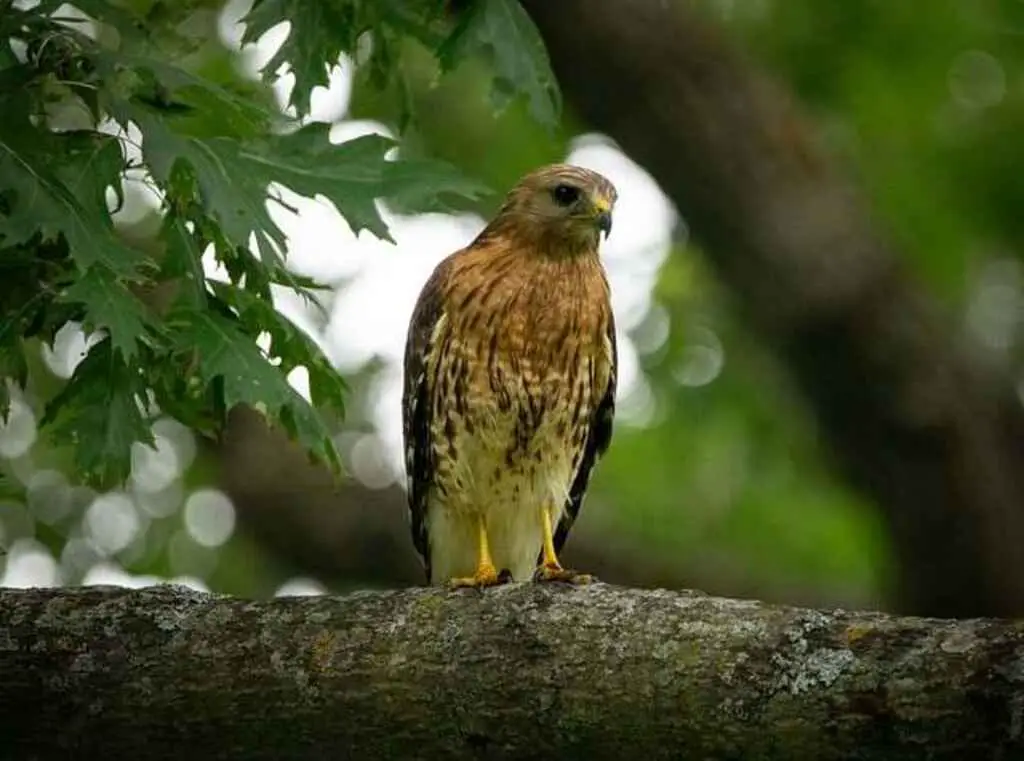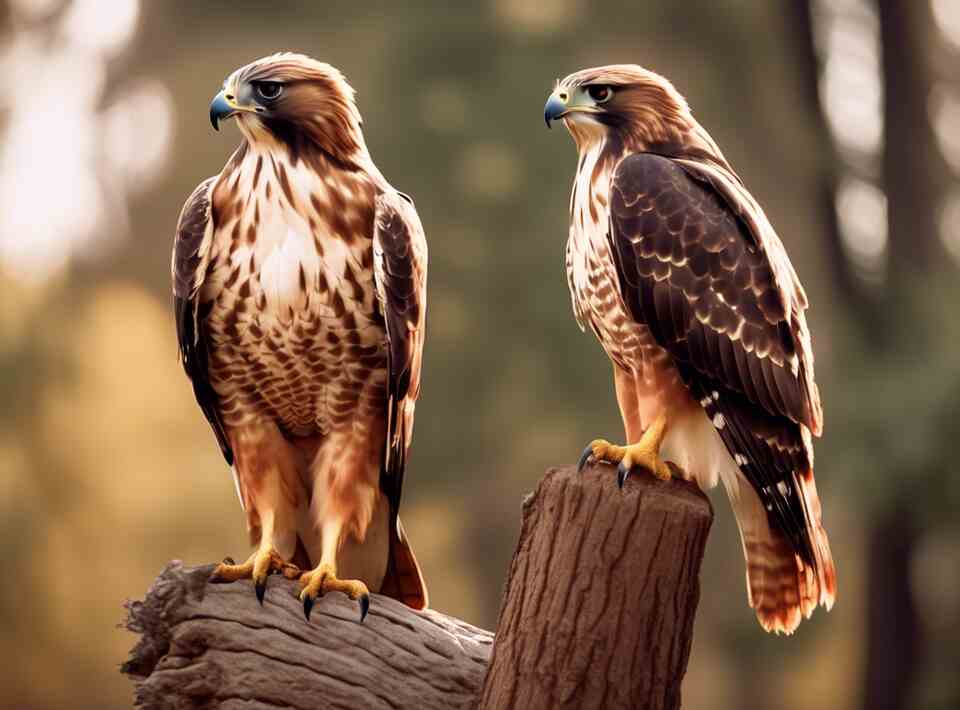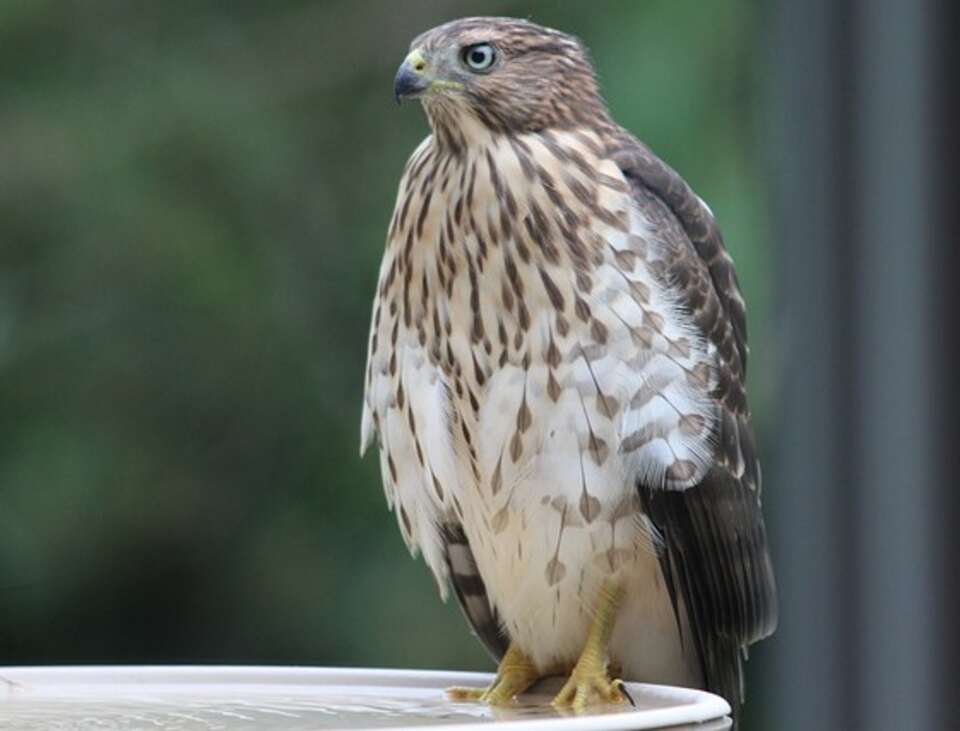Ever wondered, how to attract hawks to your yard? To draw these magnificent birds of prey, you need to create an environment with plenty of open space, high perches, and access to prey like small rodents and birds. By providing safe roosting spots and reducing excessive human activity, hawks may be encouraged to make your yard their hunting ground. In this article, you’ll discover the best steps to take to attract hawks to your yard and provide the ideal habitat for these powerful hunters.
Table of Contents
- 1 Understanding Hawks: The Basics
- 2 Creating a Hawk-Friendly Habitat
- 3 Landscaping for Hawks
- 4 Feeding Hawks: Do’s and Don’ts
- 5 Observing Hawks Responsibly
- 6 Potential Challenges and Solutions
- 7 The Benefits of Attracting Hawks
- 8 Conclusion
- 9 Author
Understanding Hawks: The Basics
Before diving into the specifics of attracting hawks, it’s essential to understand these birds and their habits. Hawks are carnivorous birds belonging to the family Accipitridae. They are known for their sharp eyesight, powerful talons, and hooked beaks, which make them excellent hunters.
Common Hawk Species in North America
There are several species of hawks that you might encounter in North America, depending on your location and the time of year. Some of the most common include:
Each species has its unique characteristics and habitat preferences, but they all share common needs when it comes to choosing a place to hunt and rest.
Hawk Behavior and Habits
Hawks are primarily diurnal, meaning they are active during the day. They spend much of their time perched on high vantage points, scanning their surroundings for potential prey. When hunting, hawks use their keen eyesight to spot small animals from afar and then swoop down to capture them with their sharp talons.
Most hawk species are territorial, especially during the breeding season. They may return to the same area year after year if they find it suitable for nesting and hunting. This is good news for those looking to attract hawks to their yard, as creating the right environment can lead to regular visits from these magnificent birds.
Creating a Hawk-Friendly Habitat
Now that we have a basic understanding of hawks, let’s explore how to make your yard more appealing to these birds of prey.
Provide Perches
One of the most important features of a hawk-friendly yard is the presence of suitable perches. Hawks need high vantage points from which they can survey their surroundings and spot potential prey.
Natural Perches
Tall trees with sturdy branches make excellent natural perches for hawks. If you have mature trees in your yard, you’re already one step ahead. Species like oak, maple, and pine are particularly good choices. If you don’t have mature trees, consider planting some for the future.
Artificial Perches
If your yard lacks tall trees, you can create artificial perches to attract hawks. Here are some ideas:
- Install tall poles (15-20 feet high) with crossbars at the top
- Erect a sturdy birdhouse on a tall pole
- Set up a dedicated hawk platform (a flat surface on top of a pole)
When installing artificial perches, make sure they are stable and can support the weight of a large bird. Place them in open areas with a clear view of the surrounding landscape.
Maintain Open Spaces
Hawks prefer hunting in open areas where they can easily spot and pursue their prey. While some cover is necessary, too much dense vegetation can make it difficult for hawks to maneuver and catch their quarry.
Creating the Right Balance
To strike the right balance, aim for a mix of open grass areas and scattered trees or shrubs. This landscape mimics the natural hunting grounds of many hawk species. Here are some tips:
- Maintain a large, open lawn area
- Trim back overgrown bushes and hedges
- Create paths or clearings in wooded areas of your property
Remember, the goal is to provide hawks with clear flight paths and unobstructed views of potential prey.
Attract Prey Animals
Hawks are carnivores, and their diet consists mainly of small mammals, birds, and reptiles. By creating an environment that attracts these prey animals, you’ll indirectly attract hawks to your yard.
Small Mammals
Many hawk species prey on small mammals like mice, voles, and rabbits. While it might seem counterintuitive to attract these animals to your yard, they are an essential part of the food chain. Here’s how you can create a habitat that supports small mammals:
- Allow some areas of your lawn to grow longer
- Create brush piles using fallen branches and leaves
- Plant native grasses and wildflowers
Birds
Smaller birds are also a part of many hawks’ diets, particularly for species like the Cooper’s Hawk and Sharp-shinned Hawk. To attract a variety of birds to your yard:
- Install bird feeders and keep them well-stocked
- Provide a clean, reliable water source like a birdbath
- Plant native berry-producing shrubs
It’s important to note that while attracting prey animals is crucial for hawks, it’s equally important to provide safe spaces for these smaller creatures. This balance ensures a sustainable ecosystem in your yard.
Water Sources
Like all wildlife, hawks need access to fresh water for drinking and bathing. While they don’t typically use standard birdbaths due to their size, you can still provide water sources that are suitable for hawks.
Large Birdbaths
Consider installing a large, sturdy birdbath on the ground or on a low platform. The bath should be at least 2-3 inches deep and have a rough surface for better grip. Place it in an open area where hawks can easily access it while keeping an eye on their surroundings.
Shallow Ponds or Water Features
If you have the space and resources, creating a small pond or water feature can be an excellent way to attract hawks and other wildlife. Ensure that the pond has shallow edges where hawks can safely approach the water.
Nesting Sites
While hawks may visit your yard for hunting, providing suitable nesting sites can encourage them to stay and potentially breed in the area. Different hawk species have varying nesting preferences, but there are some general guidelines you can follow.
Natural Nesting Sites
Most hawks prefer to build their nests in tall trees, often near the trunk or in a sturdy fork between branches. If you have mature trees on your property, they may already serve as potential nesting sites. To enhance these natural sites:
- Preserve large, mature trees
- Avoid pruning trees during the breeding season (typically spring and early summer)
- Maintain a buffer of undisturbed area around potential nesting trees
Artificial Nesting Platforms
In areas where suitable natural nesting sites are scarce, you can provide artificial nesting platforms. These should be:
- Placed at least 15-20 feet high
- Sturdy enough to support a large nest (2-3 feet in diameter)
- Have a flat or slightly concave surface
- Include a rim to prevent eggs or chicks from falling out
When installing artificial nesting platforms, place them in quiet areas of your property, away from human activity.
Landscaping for Hawks
Creating a hawk-friendly yard goes beyond just providing perches and open spaces. The overall landscaping of your property plays a crucial role in attracting these birds of prey.
Native Plants
Incorporating native plants into your landscape is beneficial for several reasons:
- They provide food and shelter for prey animals
- They require less maintenance and water once established
- They contribute to the overall health of the local ecosystem
Some native plants that can be particularly beneficial for creating a hawk-friendly environment include:
- Oak trees (Quercus species)
- Maple trees (Acer species)
- Native grasses like switchgrass (Panicum virgatum)
- Berry-producing shrubs like elderberry (Sambucus species)
Avoid Harmful Chemicals
The use of pesticides and herbicides can have detrimental effects on the entire food chain, including hawks. These chemicals can accumulate in prey animals and potentially harm the hawks that eat them. To maintain a healthy ecosystem:
- Use organic gardening methods
- Implement integrated pest management techniques
- If you must use chemicals, choose the least toxic options and apply them sparingly
Create Edge Habitats
Edge habitats, where two different types of environments meet (like where a forest meets a meadow), are particularly attractive to many wildlife species, including hawks and their prey. You can create edge habitats in your yard by:
- Allowing some areas to grow wild next to manicured spaces
- Planting shrubs or small trees along the borders of your property
- Creating transition zones between different landscaped areas
Feeding Hawks: Do’s and Don’ts
It’s important to note that directly feeding hawks is generally not recommended and may even be illegal in some areas. Hawks are wild animals and should obtain their food naturally. However, there are ways to support their feeding habits indirectly.
Do:
- Maintain a healthy population of small prey animals
- Keep your yard free of rodenticides and other harmful chemicals
- Provide a clean water source
Don’t:
- Leave out meat or other food specifically for hawks
- Attempt to hand-feed hawks or other birds of prey
- Interfere with a hawk’s natural hunting behavior
Remember, the goal is to create a natural environment that supports the entire ecosystem, not to make hawks dependent on human-provided food.
Observing Hawks Responsibly
Once you’ve successfully attracted hawks to your yard, it’s important to observe them responsibly. Here are some guidelines to ensure you’re not disturbing these magnificent birds:
Use Binoculars or a Spotting Scope
Invest in a good pair of binoculars or a spotting scope to observe hawks from a distance. This allows you to get a close-up view without disturbing the birds.
Maintain a Safe Distance
Always keep a respectful distance from hawks, especially if they’re nesting. Getting too close can stress the birds and may cause them to abandon their nests.
Avoid Flash Photography
If you’re taking pictures, avoid using flash as it can startle and disorient birds. Natural light photography is not only less disruptive but often produces better results.
Educate Others
Share your knowledge with family, friends, and neighbors. Educating others about the importance of hawks and how to observe them responsibly can help create a more hawk-friendly community.
Potential Challenges and Solutions
While attracting hawks to your yard can be a rewarding experience, it’s not without its challenges. Here are some common issues you might encounter and how to address them:
Conflict with Pets
Hawks may see small pets as potential prey. To protect your pets:
- Always supervise small dogs and cats when they’re outside
- Provide covered areas in your yard where pets can take shelter
- Consider creating a separate, enclosed area for small pets
Concerns from Neighbors
Some neighbors might be concerned about having predators in the area. Address these concerns by:
- Educating them about the benefits of hawks in controlling pest populations
- Sharing information about the low risk hawks pose to humans
- Inviting them to observe the hawks with you, fostering appreciation for these birds
Legal Considerations
It’s crucial to be aware of and comply with all local, state, and federal laws regarding wildlife. In the United States, hawks are protected under the Migratory Bird Treaty Act, which makes it illegal to harm, capture, or possess these birds without proper permits.
The Benefits of Attracting Hawks
Attracting hawks to your yard isn’t just about the thrill of seeing these magnificent birds up close. There are several ecological benefits to having hawks in your area:
Natural Pest Control
Hawks are excellent at controlling populations of rodents and other small animals that might otherwise become pests. This natural form of pest control can reduce the need for harmful chemical pesticides.
Ecosystem Balance
As top predators, hawks play a crucial role in maintaining the balance of local ecosystems. Their presence can help keep populations of prey animals in check, preventing overgrazing and other ecological imbalances.
Educational Opportunities
Having hawks in your yard provides unique opportunities for learning about nature, ecology, and wildlife behavior. It can be especially valuable for children, fostering an appreciation for wildlife from an early age.
Conservation Support
By creating a hawk-friendly environment, you’re contributing to hawk conservation efforts. Many hawk species face challenges due to habitat loss, and providing suitable habitats in urban and suburban areas can be crucial for their survival.
Conclusion
Attracting hawks to your yard is a rewarding endeavor that requires patience, dedication, and a deep respect for nature. By creating the right environment – with suitable perches, open spaces, water sources, and a healthy prey population – you can turn your yard into a haven for these magnificent birds of prey.
Remember, the key is to create a balanced ecosystem that supports not just hawks, but all the creatures they depend on. This approach not only increases your chances of attracting hawks but also contributes to the overall health of your local environment.
As you embark on this journey, keep in mind that success may not be immediate. Hawks are wild animals with their own patterns and preferences. It may take time for them to discover and become comfortable in your yard. However, with persistence and the right approach, you may soon find yourself marveling at the sight of a hawk perched majestically in your own backyard.
Whether you’re a dedicated bird watcher, a nature enthusiast, or simply someone looking to add a touch of wild beauty to your surroundings, attracting hawks to your yard can be an incredibly fulfilling experience. It’s an opportunity to connect with nature, contribute to wildlife conservation, and gain a deeper appreciation for the intricate web of life that surrounds us.
So, roll up your sleeves, grab your gardening tools, and start creating your hawk-friendly haven today. The skies above your yard may soon be graced by the awe-inspiring presence of these remarkable birds of prey.





